Since ancient times, orchid was considered a symbol of love. A love potion was prepared from its seeds, flowers decorated living quarters and greenhouses. At the moment there are more than 250 thousand artificially bred hybrids that differ in color and shape of flowers. How to care for an orchid at home so that it pleases with its flowering and does not hurt, it is interesting to many gardeners.
Material Content:
- 1 How to care for a potted orchid after purchase
- 2 Orchid transplant at home
- 3 Soil for flowers: the right composition, how to do it yourself?
- 4 How to care for an orchid at home
- 5 What to do with the arrow when the flower fades
- 6 How to propagate an orchid
- 7 The nuances of care, depending on the variety of orchids
How to care for a potted orchid after purchase
After buying an orchid in the store, it is left alone for 1-2 weeks. Preventive treatment of plants with special preparations is carried out, quarantine is observed.
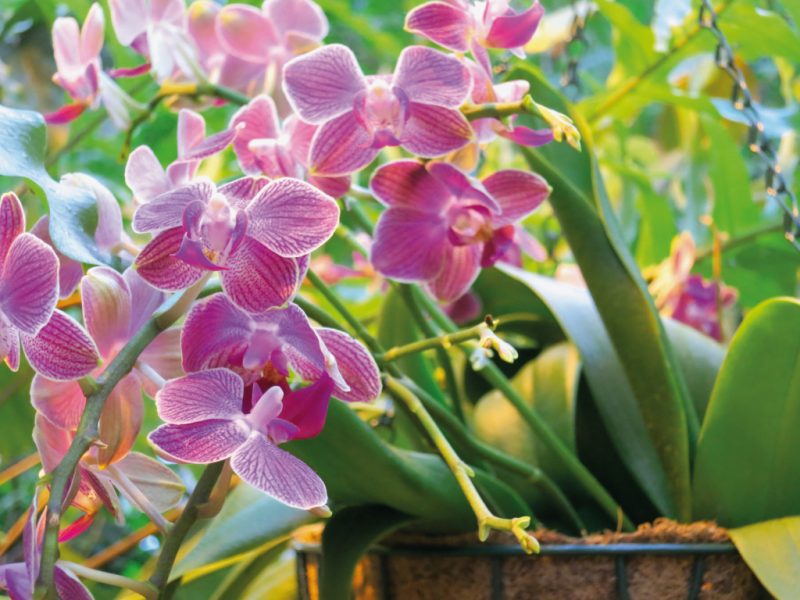
Then the plant is transplanted into a special pot for orchids. The pot is selected transparent, plastic, with holes in the bottom and side surface so that the roots breathe. The old substrate in which the plant was purchased is cleaned from the roots and discarded. If a sponge is attached to a plant in a flower shop during planting, it must be cut off, otherwise the roots will begin to rot.
Temporary quarantine for the plant
The newly purchased orchid is set aside from other pets. It is advisable to treat it with a mixture of insecticide and fungicide for the prevention of various diseases.
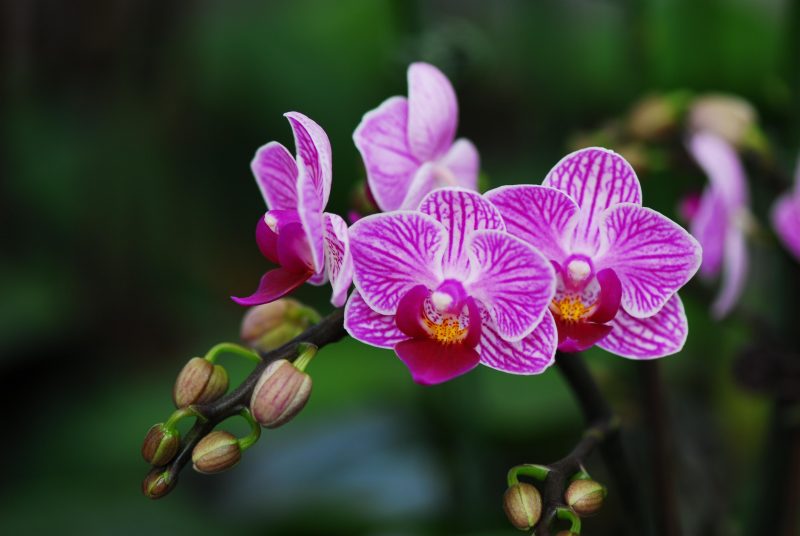
For several days, until the orchid gets used to the microclimate of the room and the new conditions of existence, it is not transplanted, watering is also not needed. You can spray on the underside of the sheet with a spray gun, adding growth stimulants to the water.
Temperature and lighting
The orchid is placed on a well-lit windowsill, where there is no direct sunlight. Lack of light can lead to plant disease, and direct sunlight to burns on the leaves.
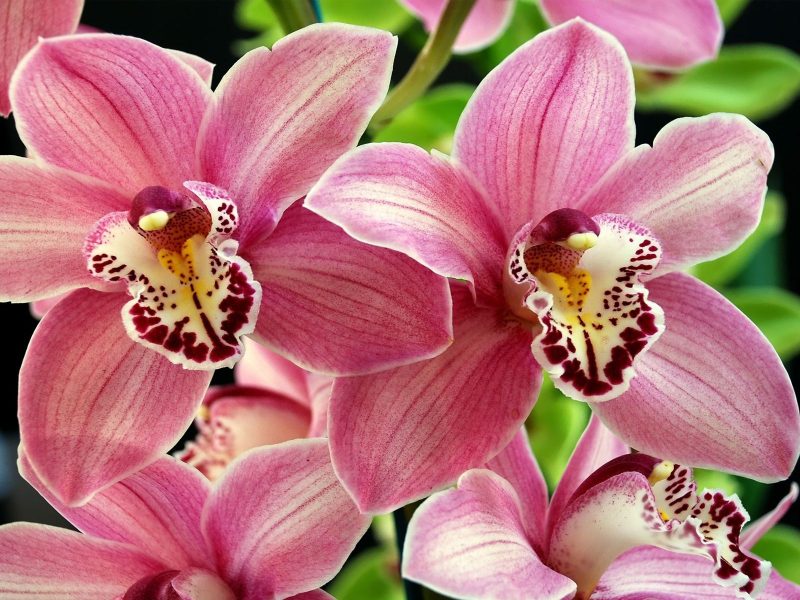
Orchids do not like too hot and dry air, they can not be placed next to radiators.
To increase humidity, spraying is carried out, making sure that water does not enter the leaf outlet. If this happens, gently pat the water with a dry cloth.
Watering, fertilizing and fertilizing
Most orchids are epiphytes, they do not need frequent watering and are not tied to the soil, they can be grown not only in a pot, but also on a wood block. Like cacti, these plants easily tolerate drought, storing moisture in thick roots and leaves, and gradually spending it. If the orchid grows in a pot, the substrate will dry out slowly, you need to make sure that the roots do not rot.
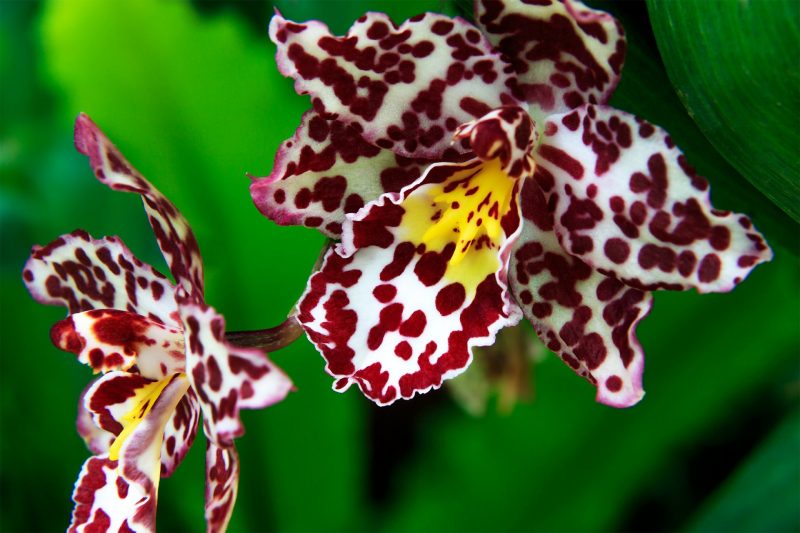
In summer, the orchid needs more watering than in winter. Water the plant only after the substrate is completely dry. It can be watered by soaking in a container of water at room temperature, immersing in it a pot or block with a plant for a quarter of an hour. It is necessary to observe quarantine when watering a newly purchased orchid. It can not be soaked in the same water with other colors.
Orchids are fed during the period of active growth with fertilizers for orchids or ordinary fertilizers for indoor flowers, induced in a weaker concentration.
Orchid transplant at home
When transplanting an orchid, it is carefully removed from the pot, the roots are cleaned of the remains of the old substrate. If there are rotten roots, they are cut with sharp scissors.

Slices are treated with dry cinnamon powder or charcoal. Fill a new flower pot with a substrate for orchids. Place the plant in a substrate, trying to distribute it between the roots.
Orchids can be planted on blocks that mimic a tree trunk. Epiphytic orchids feel comfortable when the roots are free to breathe. The block is boiled before planting, then dried. They attach a sphagnum layer on it, plant an orchid on top, clinging it with elastic bands or thin fishing line.
Soil for flowers: the right composition, how to do it yourself?
Orchids grow in a special soil consisting of tree bark and sphagnum moss. Ready-made substrate is sold in stores.
You can make it yourself from bottle caps. For this, corks are cut into large pieces of 1.5 by 2 cm. Pine bark from the forest is also suitable. Before use as a planting soil, it must be boiled to kill harmful microorganisms and insects. Boil the bark for 30 minutes, drain the water, and set to boil for the same time. Then the bark is dried and crushed into fragments from 1 to 3 cm.
How to care for an orchid at home
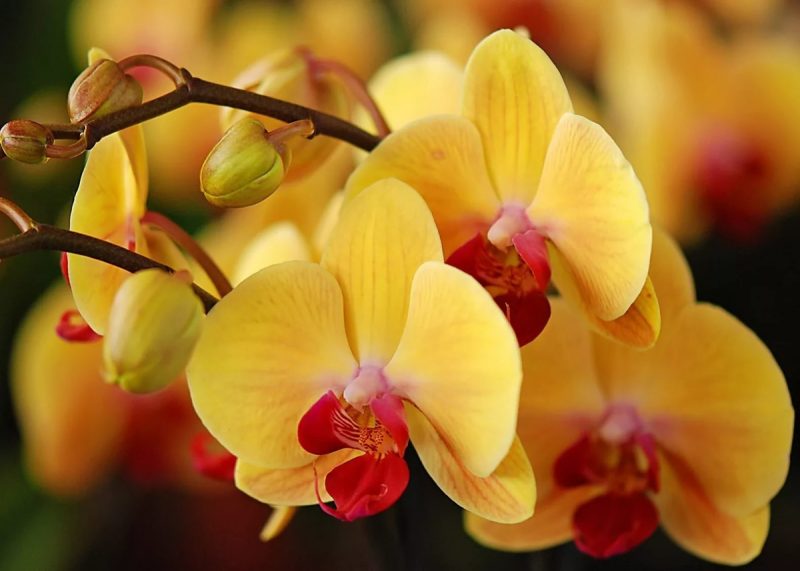
The roots of the orchid are thick, they can store moisture in themselves. Their interesting feature is the ability to photosynthesis in the light and the lack of need for soil. Therefore, the holes in the pot for the orchid need to be made not only at the bottom of the pot, but also in its walls so that the roots breathe. Proper flower care should take into account its natural features.
Watering
The plant is watered with water at room temperature, settled and passed through a filter or spring.

Whether the plant really needs watering can be checked with a wooden skewer. It is carefully, so as not to injure the roots, is stuck in the soil of a flower pot with an orchid, and removed only after an hour. If the skewer is dry, the plant can be watered; if wet, it is better to postpone watering.
Water is poured carefully so that it does not fall into the base of the leaves. In summer, the plant needs active watering - about 1-2 times a week. In winter, the amount of watering is reduced to 1 time in 2 weeks.
You can water orchids by soaking. The pot with the plant is placed in a container of water at room temperature for 15 minutes. Then they take it out and place it on the grate to drain excess moisture. In winter, this procedure is carried out once every two weeks.
In winter and summer, the orchid is sprayed from the spray bottle with very small drops. A stream of water is sent not to the plant, but next to it, moistening the air or to the underside of the leaves.
What fertilizing and fertilizing are suitable for flowers
There is a wide variety of special fertilizers for orchids. The best top dressing is leaf. Orchids are sprayed every 2 or 3 weeks during the period of active growth and flowering.

Feeding is also carried out with complex mineral fertilizers. Conventional fertilizers are induced in a concentration of 3 or 4 times lower than recommended in the instructions for indoor plants. You can fertilize during irrigation by adding diluted fertilizer to irrigation water once every 2 weeks.
We transplant and transplant
Orchids are transplanted every 2 years or every year. The pot is taken with a larger diameter and height than the previous one. It must be transparent so that the roots of the plant are visible through its walls. The healthy roots of an orchid that are inside the pot are white or yellow. If they receive a lot of light, they may be greenish.

Before transplantation, they do not water it, in the wet state it has very fragile roots. Soil from the bark of trees and sphagnum should also be dry.
Instead of drainage, you can put polystyrene on the bottom of the pot, which dries very quickly and prevents the roots from rotting. Having placed the roots in the planting container, the space between them is filled with large pieces of bark. Void is acceptable so that the roots breathe better.
If the orchid does not bloom - what to do and how to make it bloom
If the orchid does not bloom for a long time, you can try transplanting it. And also to stimulate flowering, it is useful to take the plant at night to a cool balcony, where the air temperature is 16–18 ° C. With a difference in day and night temperature, the plant experiences a shock, and it begins to bloom.
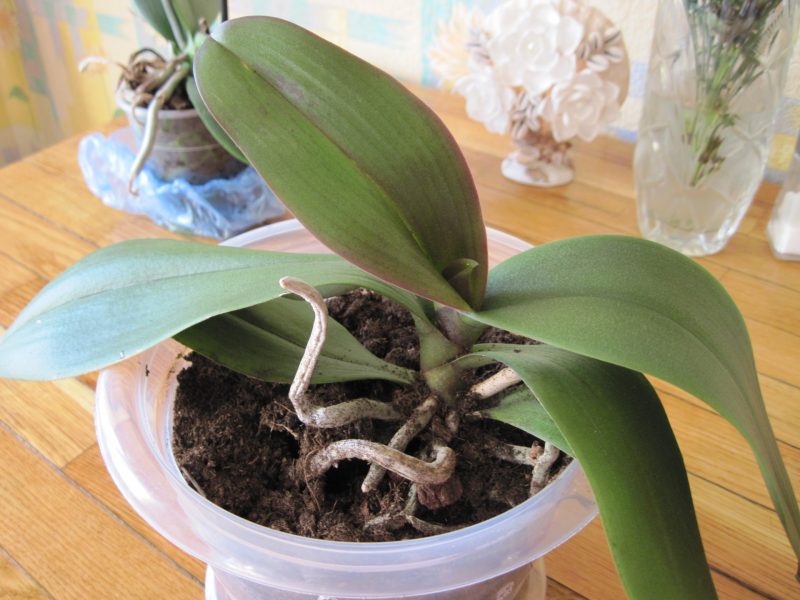
An orchid in nature blooms during a drought. If she receives plentiful watering at home, there will be no flowering.
Orchids need a bright, diffused light, with its lack of flowering, too, will not come. Excess fertilizer can interfere with flowering.
You can stimulate flowering by reducing watering. The plant is placed for 2 or 3 weeks in a shaded place and is not watered. Once again on the light windowsill, the orchid begins to actively develop, growing roots, leaves, and releasing flower arrows.
Growing an orchid from seeds or small children, you need to remember that it blooms most often only 5-6 years after planting.
Pest and Disease Control
Most often, orchids begin to hurt with excessive watering. If the roots are suffocating, the substrate in which the flower grows begins to rot. The plant is transplanted, cutting off all rotten roots, treating the slices with charcoal and fungicide, do not water it for some time. Poor illumination of orchids affects poor health, low air humidity, and violation of the temperature regime.

There are 32 known species of pests affecting orchids, and about a hundred pathogenic fungi, bacteria and viruses. Most often, a spider mite, thrips, scale insects, aphids settle on flowers.
From the spider mite, the treatment with phytoderm, actophyte and vermitek is effective. 3 treatments are carried out with an interval of 10 days. Fitoverm also helps in the fight against thrips, scale insects and aphids.
With the appearance of various rot, pathogens, which are pathogenic fungi, plants, are treated with copper preparations, fungicides.
What to do with the arrow when the flower fades
After flowering orchids, the peduncle may turn yellow and dry. If this does not happen, and the peduncle remains green, they simply shorten it.
On the peduncle, as a rule, there are several living buds that flowers can give. Pruning is done 2 cm above the upper living kidney. Care for the orchid in the pot after flowering is necessary, reducing watering and the frequency of top dressing. The plant should have a dormant period.
How to propagate an orchid
There are orchid hybrids that breed very easily. They give root sockets. When transplanting, the outlet can be separated, and put in a separate independent pot.
Under adverse conditions, an orchid on a peduncle instead of a flower can grow a baby - a rosette of leaves will start to grow. When 2 or 3 roots 6 cm in size appear on the baby, it is disconnected and planted in a separate pot.
You can propagate the orchid by cutting off one leaf and part of the rhizome. Such a plant will release several children in a year, and become a full-fledged flower.
The nuances of care, depending on the variety of orchids
In indoor conditions, Phalaenopsis orchids are most often grown. No less popular are the species of the genera Cattleya and Dendrobium. The natural conditions for the growth of various species are very different, this must be considered when indoor care for plants.
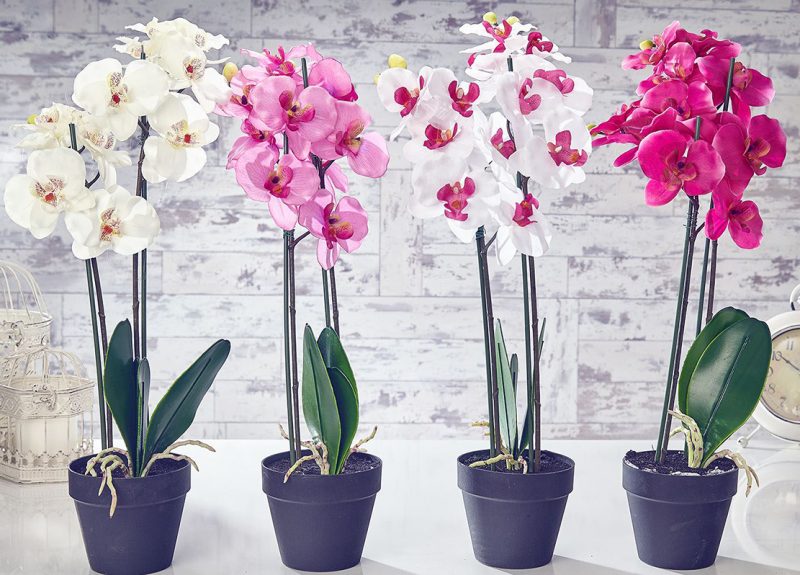
The homeland of Cattleya is the Amazonian purple basin, where air humidity reaches 100% and is always warm. Species: Cattleya nobilior, Cattleya intermedia, Cattleya guttata grow in arid climates among cacti under direct sunlight, they normally tolerate air temperatures up to 35 ° C heat.

Dendrobium, which is distinguished by thin roots, requires rare watering, but does not tolerate complete drying of the substrate. Water for irrigation should not be hard. Some species have a long rest period, which can stretch for 6 months. At this time, they are practically not watered.
- George












